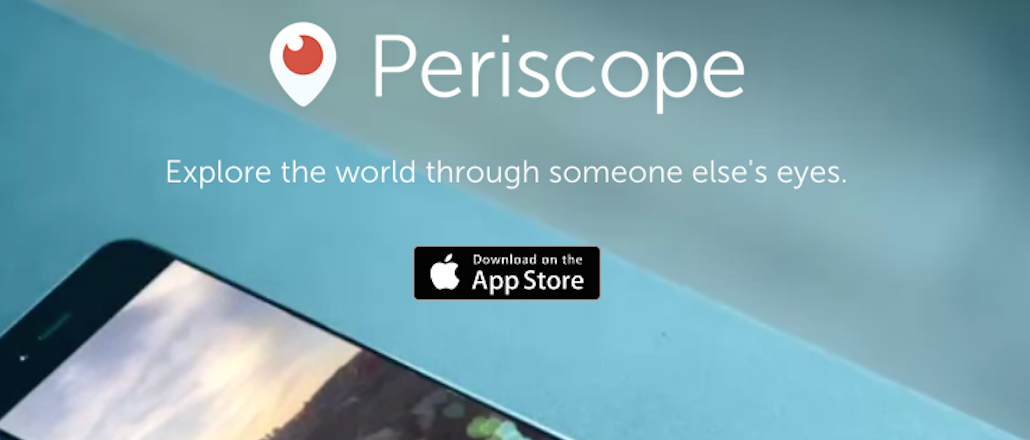
Jeff Rosenblum is the founding partner of Questus, a San Francisco-based digital agency
One of the most exciting developments coming out of SXSW was the rise of live streaming, which enables anyone to broadcast live video from their smartphone to anyone on Twitter. For a brief moment in time, a startup named Meerkat was poised to rule the category until Twitter ruined its party by announcing the acquisition of Periscope. All of this scandalous fun has created incredible buzz. Periscope, now one of the five-most-downloaded apps, has every cutting-edge marketer running internal brainstorms about how to do breakthrough work with this shiny new object.
Over the coming months, brands and agencies will attempt to gin up a little buzz around their live-streaming efforts. But, more often than not, brands will fail to effectively use the tool to meet marketing KPIs or increase revenue. Here are five driving principles to consider so you can create a case study that’s buzzworthy and, more importantly, highly effective.
Start at the finish line.
Like many new technologies, marketers will fly like moths to live-streaming’s flame. But history suggests that most efforts will fail. The key to success is to start at the finish line by defining the objectives. It’s Strategy 101, but when it comes to social media, many brands skip this stage and go straight to activation. There are critical questions you need to answer and document before you even start ideating: Are you trying to increase awareness? Build perceptions? Increase revenue? Drive loyalty? By how much? When? How will you measure it? This might not be the most exciting part of marketing, but it ensures that the brand reaps measurable ROI, not just industry buzz.
Provide unique access.
The insanely powerful aspect of live streaming is that it enables anyone to become a publisher. Think of it this way: A short time ago, the media industry went from three big networks to hundreds of cable channels. Now, there’s an infinite number of sources. The industry actually has been heading this way for a while, with anyone able to post to YouTube and Vimeo. The key for live streaming is to leverage the unique aspect of it, which is immediacy. Brands must create content that will pull viewers from their daily habits. This should come in the form of unique access — content that can’t be acquired through big cameras and big networks. For example, sponsored athletes could provide unique access to training on behalf of an apparel company.
Create value.
Since the dawn of advertising, brands have strived to be funny. But there’s a lot more to marketing communication than simply trying to get the audience to laugh. Unless you work in a fairly commoditized category, like soda or beer, seek first to provide value. Help viewers make a smarter purchase, provide them with stronger customer service or enable them to perform better in your category. For example, if you are a travel company, help viewers have a better vacation by providing sneak peak access to activities and events in the area. This isn’t to say that emotion isn’t important. All content must be engaging to be effective. But don’t go straight to the laugh track because users want more from your brand.
Thin-slice the audience.
With infinite content comes infinite information overload. So brands should find what is uniquely interesting to very discreet audiences. Very few brands will be able to create content that has mass appeal. If you want to take advantage of FOMO (that rapidly escalating epidemic: fear of missing out), create psychographically targeted content. As an automotive company, you can create content that appeals to very rational decision influencers (e.g., performance, style, safety) or very emotional influencers (e.g., sense of adventure). Audiences are not monolithic. What appeals to one audience could be anathema to another. Live streaming enables brands to create a very unique and intimate connection with each viewer. It fulfills upon the narrowcasting ideal that the industry has promised for the past decade.
Develop an ecosystem.
Live streaming is cool. Very cool. But let’s not get carried away. It’s going to predominately be low-quality video on small screens. A great piece of live-streamed content will not be enough to make or break your brand. There needs to be an ecosystem that affects and is affected by live-stream content. There should be a seeding strategy to generate viewership, a content strategy to develop loyalty and a data strategy to extend the impact into other owned, earned and paid media. Think about earlier example of a travel company creating live streams of local events and activities. An ecosystem might include a hashtag that runs in the weeks leading up to the event, there could be multiple videos that create the proverbial digital long tail and data can be produced help create personalized web site content to help shift a prospect through the entire sales funnel.
There’s an exponentially growing audience with an insatiable need for live-streaming content right now. I certainly recommend getting aggressive with this opportunity, but don’t get so aggressive you miss these key principles. Because when you really analyze the principles outlined above, you realize that they apply to the fundamentals of any great marketing tactic, ultimately exemplifying that as much as technology changes the game, the rules stay the same.
More in Marketing

Agencies create specialist units to help marketers’ solve for AI search gatekeepers
Wpromote, Kepler and Jellyfish practices aim to illuminate impact of black box LLMs’ understanding of brands search and social efforts.

What AI startup Cluely gets — and ad tech forgets — about attention
Cluely launched a narrative before it launched a tool. And somehow, it’s working.

Ad Tech Briefing: Start-ups are now table stakes for the future of ad tech
Scaled ad tech companies need to maintain relationships with startups, when the sector is experiencing ongoing disruption due to AI.





